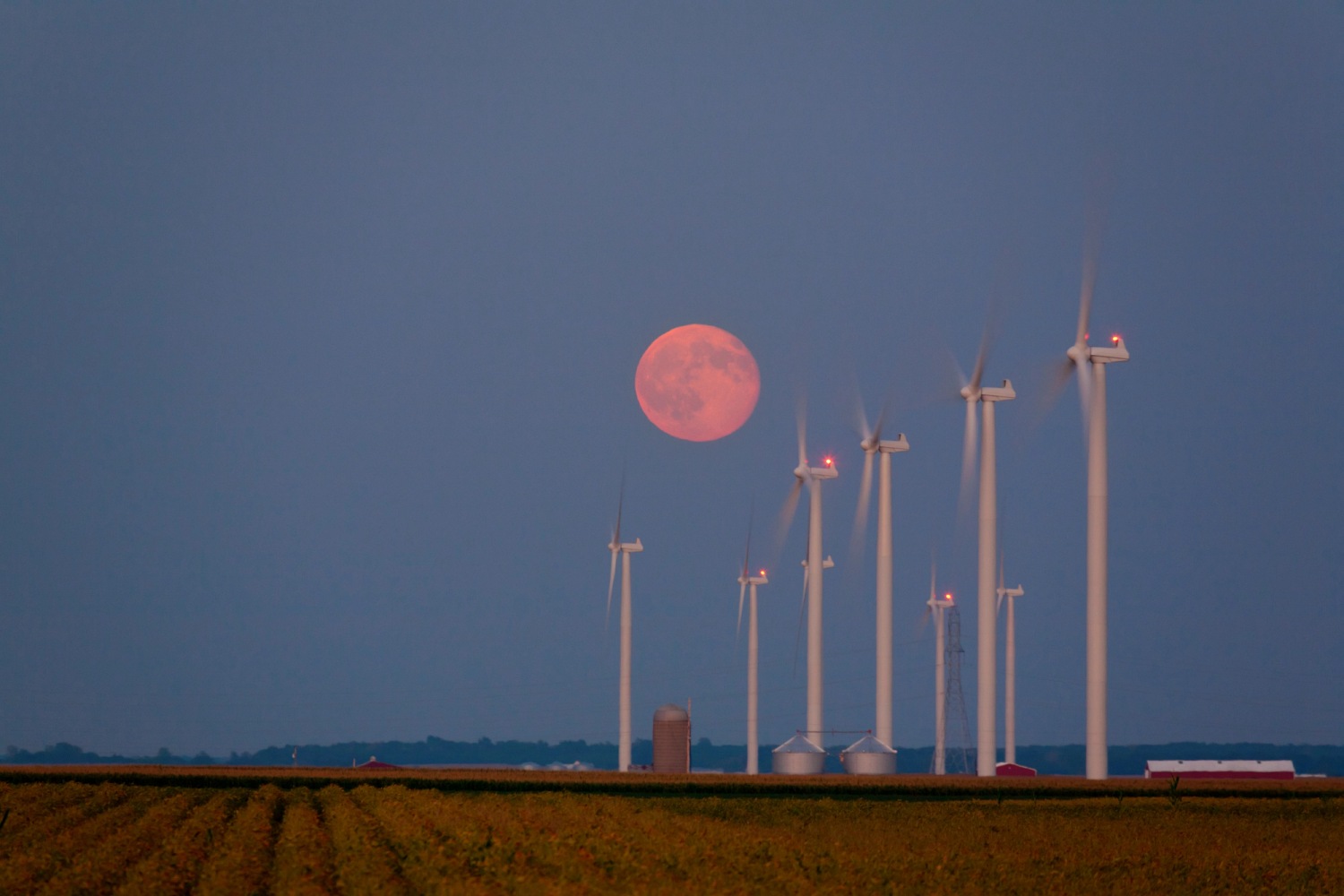By Sue Lani Madsen for The Spokesman, April 11, 2024
In an area where the tallest structures are grain elevators, industrial wind turbines are more than simply a disturbance to the rural skyline. They are transformative. Modern turbines are 600 to 650 feet tall. They change a rural landscape into an urban one.
As one neighbor put it, “If I wanted to look at tall buildings and blinking lights I’d move to the city.”
Modern wind turbines are taller than the Space Needle, twice the height of downtown Spokane’s Bank of America Building and six times taller than the average grain elevator. It’s two football fields including the end zones.
Industrial wind turbines are massive. And there’s never just one. Developers in Lincoln and Whitman counties are talking about 40 or 50 or 75 turbines per project. Besides the visual disturbance, they bring with them the low thrum of noise, disturbing the sound of silence.
The tension in rural communities is exacerbated by the number of parcels owned by out-of-county investors, trusts and charities. Absentee landowners will never feel the impacts – but do reap financial benefits – from leasing access to multinational energy corporations who are farming billions in tax credits. Tenant farmers are in a tough spot, some afraid to speak out because they fear losing their agricultural leases while having to farm around turbines and the roads that connect them less efficiently.
Or a local landowner might be seeking a way to resist increasing development pressures to subdivide agricultural land for housing. Farmers looking for ways to diversify crops for greater resilience as grain prices rise and fall might decide “planting” turbines is a positive addition to their business plan. They understand the risk of no-fly zones inhibiting fire-fighting efforts because their houses are on the line too. Balancing the financial and social tradeoffs is a heart-wrenching dilemma, but at least they literally have skin in the game.
Gov. Jay Inslee’s remarks to the U.N. Climate conference in 2022 dismissed opposition simplistically as “not in my backyard,” saying regulatory reform was needed to overcome it. The Energy Facility Site Evaluation Council was established as an independent agency in 2002 to provide an alternative to bothersome local permitting processes. After being asked if Inslee stood by his remarks, Mike Faulk said in an email, “The governor sees a dichotomy between legitimate concerns about potential siting impacts and those who simply oppose clean energy for the sake of opposing clean energy, i.e. NIMBYism.”
It’s easy to dismiss anyone who isn’t a decarbonization cheerleader as just a NIMBY. But there are legitimate questions about the life cycle of industrial wind energy facilities and how clean they really are. There are equally legitimate questions on the deadly conflict between wind turbines and the eagles and other wildlife.
Read the full article here.
Wind Concerns is a collaboration of citizens of the Lakeland Alberta region against proposed wind turbine projects.


